HY514 Περιβάλλοντα Επίλυσης Προβλημάτων (ΠΕΠ) για την Υπολογιστική Επιστήμη (2015)
ΗΛΙΑΣ ΧΟΥΣΤΗΣ
“A PSE is a computer system that provides all the computational facilities necessary to solve a target class of problems”
In this course you will study a number of PSE environments including MatLab, Sage, Python, and others.
The problem space assumed in this course is covered in the ebook by E. Houstis "
Εγχειρίδιο Αριθμητικών Μεθόδων για Επιστημονικές Εφαρμογές με την Χρήση
MatLab και Python". Particular emphasis will be given to machine learning, optimization, data analysis, image processing, and semiconductor modeling & simulation applications.
Λιγότερα“A PSE is a computer system that provides all the computational facilities necessary to solve a target class of problems”
In this course you will study a number of PSE environments including MatLab, Sage, Python, and others.
The problem space assumed in this course is covered in the ebook by E. Houstis "
Εγχειρίδιο Αριθμητικών Μεθόδων για Επιστημονικές Εφαρμογές με την Χρήση
MatLab και Python". Particular emphasis will be given to machine learning, optimization, data analysis, image processing, and semiconductor modeling & simulation applications.
“A PSE is a computer system that provides all the computational facilities necessary to solve a target class of problems”
In this course you will study a number of PSE environments including MatLab, Sage, Python, and others.
The problem space assumed in this course is covered in the ebook by E. Houstis "
Εγχειρίδιο Αριθμητικών Μεθόδων για Επιστημονικές Εφαρμογές με την Χρήση
MatLab και Python". Particular emphasis will be given to machine learning, optimization, data analysis, image processing, and semiconductor modeling & simulation applications.
Κατηγορία: Ηλεκτρολόγων Μηχανικών και Μηχανικών Υπολογιστών » Προπτυχιακό
Θεματικές Ενότητες
TOPICS COVERED IN THE COURSE and EXAMINATION POLICY
- Introduction to python one of the most popular programming languages
- Introduction to sage
- Introduction to R and texmacs
- Introduction to julia
- Review matlab
- Comparative study of MatLab, Sage, texmacs, Python, and Julia Computational Environments for Scientific Computing
- Introduction to PSEs for semiconductor simulations
- Case studies using the above PSEs in machine learning, optimization, image processing, and data analysis
- You should try enroll in the 6.00.1X edx course "introduction to computing and programming" that teaches python and its use to scientific computing https://courses.edx.org/dashboard. Although the course started in August 24, 2015, you will be able to cover the one month material easily. You can register to this course as audit or as certified student. Notice that as a certified student you must pay a minimal fee but you get a certificate that it is recognized as a MIT course.
- You must register in this course (HY514) through eclass and provide your email
- The problem space assumed in this course is covered in the ebook by E. Houstis "Εγχειρίδιο Αριθμητικών Μεθόδων για Επιστημονικές Εφαρμογές με την Χρήση MatLab και Python"
GROUP WORK REQUIRED IN THIS COURSE
1) Presentations of the material of the course to be specified
2) Assignments and Projects
INDIVIDUAL EXAMINATION
1) Final exam on python and julia based on the assignments and projects of the course
2) No exam if you take 6.00.1X as certified student and pass the course
CALCULATION OF GRADE
1) the grade in presentations, assignments, and projects
2) % of the final exam grade
3) final grade 1) * 2)
Remark
Python is quickly taking the lead as one of the most popular programming language. You might be skeptical, but Python is growing at a faster rate than any other language. It received TIOBE Programming Language of the Year award twice, once in 2007, and again in 2010. Even now it still has the highest growth of any other language. What makes Python so great?
While statistical analysis always has its flaws, the trends are pretty clear. Java, C#, even PHP are losing popularity, Python, Ruby, Haskell, Ada are gaining popularity, and even Google Trends seems to agree.
Python is an interpreted language, like PHP, Ruby, and Perl. While PHP was very popular throughout the 2000s. Recently PHP and Python have become equally as popular. Now they are neck in neck. Both of them have enough features to be capable of anything. Some subtle differences however, make Python more amazing than PHP.
Python success stories
http://www.python.org/about/success/
https://wiki.python.org/moin/OrganizationsUsingPython
Ημερολόγιο
Ανακοινώσεις
- Πέμπτη, 01 Οκτωβρίου 2015
- Δευτέρα, 29 Σεπτεμβρίου 2014
- Δευτέρα, 29 Σεπτεμβρίου 2014
- Τετάρτη, 24 Σεπτεμβρίου 2014
- Τετάρτη, 24 Σεπτεμβρίου 2014
